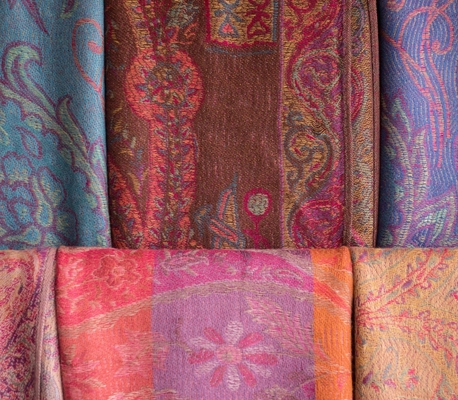Turkish Textiles: Exploring Different Fabric Types

Turkey is renowned for its exquisite natural textiles, especially those crafted from cotton. The traditions of textile production in Turkey span centuries.
When you hear "Turkish textiles," you immediately conjure images of the softest towels, luxurious tablecloths, and sumptuous bedding.
In reality, there are numerous varieties of Turkish fabrics, each distinct in style, composition, and other parameters. Understanding their characteristics is not only interesting but also essential when purchasing Turkish textiles, a common practice among foreign visitors to Turkey.
Şile Fabric (Şile Bezi)
Şile fabric is a lightweight, handwoven cotton fabric used to make summer dresses, t-shirts, tablecloths, and bedding. To the touch, it resembles linen. This "breathable" fabric effectively absorbs moisture, making it ideal for crafting summer garments. Typically, this fabric is not dyed but adorned with embroidery. It's named after Şile, a district in Istanbul where it was first produced, and where it continues to be made today. Notably, the fabric undergoes washing in the Black Sea before being used for crafting items. You can find clothing and textiles made from this material at bazaars across the country, as well as at the Şile Yeryüzü Pazarı market held in the district on Fridays and Sundays.
Denizli Weaving (Denizli Dokuması)
The term "Denizli weaving" refers to textiles crafted from pure cotton in the Denizli province, with a history dating back nearly 4,000 years, supported by recent archaeological excavations revealing textile factories. The province is also famous for its Pamukkale thermal springs, which translate to "Cotton Castle" and are indeed cotton-white in color. Denizli is renowned for its weavers, with their thick cotton towels being especially popular in Turkey. These towels are made from a type of thick cotton fabric that is incredibly soft and highly absorbent. Traditionally, they are dyed with natural colors derived from materials such as walnut leaves, onion skins, and oak galls. Several Turkish hammams (bathhouses) within Istanbul's Grand Bazaar sell these traditional towels.
Yazma Fabric
The term "yazma" translates to "writing" in Turkish, and it's used for cotton fabric that is hand-painted or block-printed. Essentially, this fabric can be of any type; it's called yazma because of the painted patterns. Each province produces yazma with a unique design, using various fabrics and colors. The most famous types include black patterns on white or colored cotton from Tokat, bright yellow fabric with blue, red, and green motifs from Kastamonu, and silk variations from Bursa. These fabrics are used to create various items, from stylish summer dresses and traditional harem pants to headscarves. Yazma fabric and products made from it can be found at local weekly markets and fabric stores.
Ikat
The term "ikat" originates from the Malay word "mengikat," meaning "to tie." In this fabric, threads used for creating patterns are tied together and dyed before the fabric is woven, a process similar to batik but different in that the dye is applied to the threads themselves before the fabric is woven. The result is a fabric with a unique blend of colors and patterns. Recently, fabric created using this method has gained immense popularity, with applications in home furnishing and bedding. It is one of the oldest forms of textile decoration and exists in many countries, each with its own distinctive style or patterns. You can purchase items made from ikat fabric at the Grand Bazaar and in stores like Dere Gözü, Mudo Collection (a home goods store), and Yastık by Rıfat Özbek (a designer pillow store) in Nişantaşı.
These are some of the most well-known types of Turkish textiles. Always check the label or ask the seller if you're looking for a specific type. Quality fabrics and textiles are available at major Turkish markets and stores. It's advisable to choose large retail chains or brand showrooms for assurance that you're purchasing genuine products.





